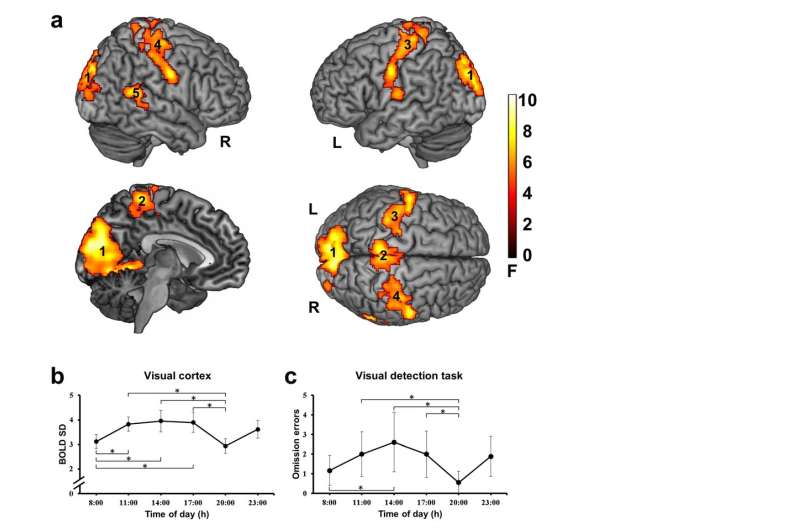Optimized perception in the twilight zone

In the pre-industrial age, twilight was a dangerous time for humans due to higher risk of encountering nocturnal predators. The ability to see in weak light conditions was therefore at a clear evolutionary advantage. Neuroscientists at Goethe University Frankfurt have now discovered that the human brain prepares for dawn and dusk by ending resting activity in the visual cortex at these times so that weak visual stimuli are not overwhelmed by the brain's background noise.
The transition from night to day, light and dark, has a greater influence on perception that previously known. The time of day has a particularly significant impact on the quality of visual signals around us. In the course of evolution, our visual system has adapted perfectly to light conditions during the day. It has, however, also developed a strategy for twilight—evidently, the inner clock predicts these periods and prepares the visual system for periods of low-quality visual signals.
"Whilst the cogs of our inner clock have already been studied in depth, it was not known to date which mechanism optimises visual perception at times when poor signal quality can be expected," explains Dr. Christian Kell from the Brain Imaging Center of Goethe University Frankfurt. Lorenzo Cordani, his doctoral researcher, examined how 14 healthy subjects reacted to visual stimuli at six different times of the day in the framework of a complex fMRI study.
The main idea of the study was to relate the perception of sensory signals to the brain's resting activity. Such background noise preoccupies the brain even in the complete absence of external stimuli. The international team led by Christian Kell, Lorenzo Cordani and Joerg Stehle showed that the body independently downregulates resting activity in the sensory areas during dawn and dusk. The more resting activity was reduced, the better the subjects were able to perceive weak visual signals when measured afterwards.
This means that humans can perceive weak visual stimuli during dawn and dusk better than at other times of the day. In other words, during twilight, the signal-to-noise ratio in the sensory areas of the brain improves. Since resting activity during twilight decreases not only in the visual but also in the auditory and somatosensory regions of the brain, the researchers assume that perception also sharpens in areas besides the visual system. An earlier study showed that weak auditory stimuli during twilight were perceived better. The mechanism now discovered, which was published in the latest issue of Nature Communications, could therefore represent a key evolutionary advantage that ensured survival in the pre-industrial era.
More information: Lorenzo Cordani et al, Endogenous modulation of human visual cortex activity improves perception at twilight, Nature Communications (2018). DOI: 10.1038/s41467-018-03660-8




















